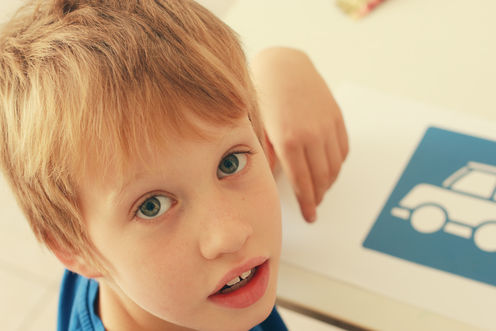
Autism Spectrum Disorder (ASD; which now includes former diagnostic labels such as Autistic Disorder and Asperger syndrome) is a life-long neuro-developmental disorder. It first shows itself early in life, emerging across toddlerhood and into the preschool years.
It’s what’s on the outside that counts
There is no genetic or blood test for ASD; diagnosis is based on behaviour.
Specifically, we look for three things when deciding whether someone has an Autism Spectrum Disorder.
-
Impaired ability to interact socially with others. The person may have reduced motivation and/or skills for engaging with others. Precisely what we look for depends on their age and life-stage. During the school years, children may not seem that interested in their peers. Or they may be interested, but not know how to go about forming or maintaining friendships.
-
Restricted, repetitive, and/or sensory-seeking behaviours. Again, precisely what we look for depends on the person’s age. During the school years, children may enjoy activities or topics that seem very unusual (like flicking string or collecting twigs) or their interests may be age-appropriate, but overly intense. All children have special interests; Thomas the Tank Engine, Frozen and Minecraft come to mind. But the difference is children with ASD engage more intensely or in highly specific ways with their special interests, and can do so to the exclusion of other people. Some children with ASD do try to draw others into their hobbies, but don’t realise when others just aren’t that interested.
-
Finally, we look to see that these social issues and restricted/repetitive behaviours have been there since toddlerhood. ASD is something inherent to the child, not something they “catch” later in life.
Other features can also accompany an Autism Spectrum Disorder, such as anxiety, feeding and sleeping issues, hyperactivity and medical conditions such as epilepsy. Together, these can have a substantial impact on school performance.
Growing awareness = earlier diagnosis
These days, ASD is often diagnosed in pre-school. ASD affects around 1% of Australian preschoolers and most young children receive their ASD diagnosis around their fourth birthday. However, ASD can be diagnosed reliably much earlier – often by a child’s second birthday – if symptoms are clear and professionals are knowledgeable.
By school age, however, some evidence suggests ASD affects 1.5% or more of children. This suggests many children with ASD are missed during the preschool years. Later diagnosis may occur because a child’s symptoms are subtle, or because of limited awareness or available resources in the area.
How to spot an Autism Spectrum Disorder
Teachers are well placed to spot possible ASD in school-age children. They have experience with the range of skills children present at a given age and can watch children interacting together. Many school-age children are referred for specialist assessment when teachers become concerned.
The process for making an ASD diagnosis in childhood is a bit like that for identifying a learning disability. We look for whether a child’s social skills fall short of their potential. Unfortunately, though, there is no easy test to tell us if a child shows “age-appropriate social behaviour”, in the way that we do have tests for age-appropriate language skills such as reading or writing.
A reading-based learning disability is diagnosed when a child’s reading achievement is below what we expect for their overall intelligence and no other clear reason explains their poor reading (such as lack of exposure to text). As ASD is a disorder of social skills, we evaluate whether these are lower than expected for the child’s age and level of intelligence, and we rule out other possibilities.
If a child with poor social skills was severely maltreated early in life, this is probably not ASD. If a child is socially immature, but her social skills are in line with her mild intellectual impairment, this is probably not ASD.
ASD is diagnosed when a child’s social skills are below those of same-age peers and this cannot just be explained by an intellectual or language impairment that may also be present. Similarly, the child’s restricted/repetitive behaviours are more than expected for their age and intellectual level.
Aren’t some people just less outgoing?
Many human abilities – intelligence, physical fitness, a musical ear – fall on a “bell” or normal curve. We are all different, but most of us cluster around a mid-point in our level of skill, with only few of us particularly impaired or excellent.
Sociability is no different. Some of us are more or less outgoing than others. We set a “cut-off” point for people who have very limited social skills (for their age etc) and this may seem like an arbitrary method for diagnosing ASD. But the cut-off point is an important one; where social difficulties present a functional problem for the person’s daily life. ASD is not just about being bit shy or reserved.
What’s in a name?
Many children without diagnosed ASD benefit from support to develop their social skills. And for children whose social difficulties are strong enough to be considered “symptoms”, a formal diagnosis can allow access to specialist support.
Some people consider a diagnosis unnecessary, however, or even undesirable. After all, a diagnosis is just a label. But a label can bring greater understanding – understanding of one’s child, or of oneself. And understanding often leads to greater acceptance, which is good for mental health.
Kristelle Hudry receives funding from La Trobe University’s Building Health Communities (BHC) Research Focus Area (RFA). Kristelle also receives financial support, toward her research-related activities and travel, by conducting training workshops with researchers and clinical professionals on ASD diagnostic assessment.
